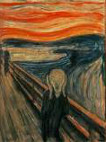 The New York Times published an interesting article about the contemporary art market. Although buyers increasingly treat art as an investment, the market is characterized by opaque transactions with little outside oversight. The industry is designed to separare customers from their money.
The New York Times published an interesting article about the contemporary art market. Although buyers increasingly treat art as an investment, the market is characterized by opaque transactions with little outside oversight. The industry is designed to separare customers from their money.
The article highlights several notions which make the market an inefficient investment vehicle. Collectors face pricing opacity and deliberate attempts to obfuscate value. At the same time, the art market faces little regulatory enforcement.
1. First bids are generally fictional numbers pulled from the auctioneer’s ass.
2. Collectors often bid against collaborators who’ve agreed to pay a minimum price in exchange for profits from a final bid that exceeds it.
3. Galleries — in New York anyway — stone-cold ignore a 42-year-old law that requires them to post prices.
The Times, being the Times, focused its attention on wealthy collectors while its final point applies to most buyers. The majority of art is sold in galleries without posted pricing. Without this tool, it’s very difficult to assess the value of a artist in the gallery market.
Art prices are driven by public taste, not intrinsic value. Since tastes shift with time, value is a moving target. This makes it difficult to gain returns on investments. Market opacity makes it nearly impossible.
Art is a bad investment. It’s nearly impossible to assess the risk of a particular piece but even those who collect for pleasure want some assurance of price integrity. The only way to provide that is with greater transparency. Unfotunately, the Times article doesn’t paint a rosy picture.
